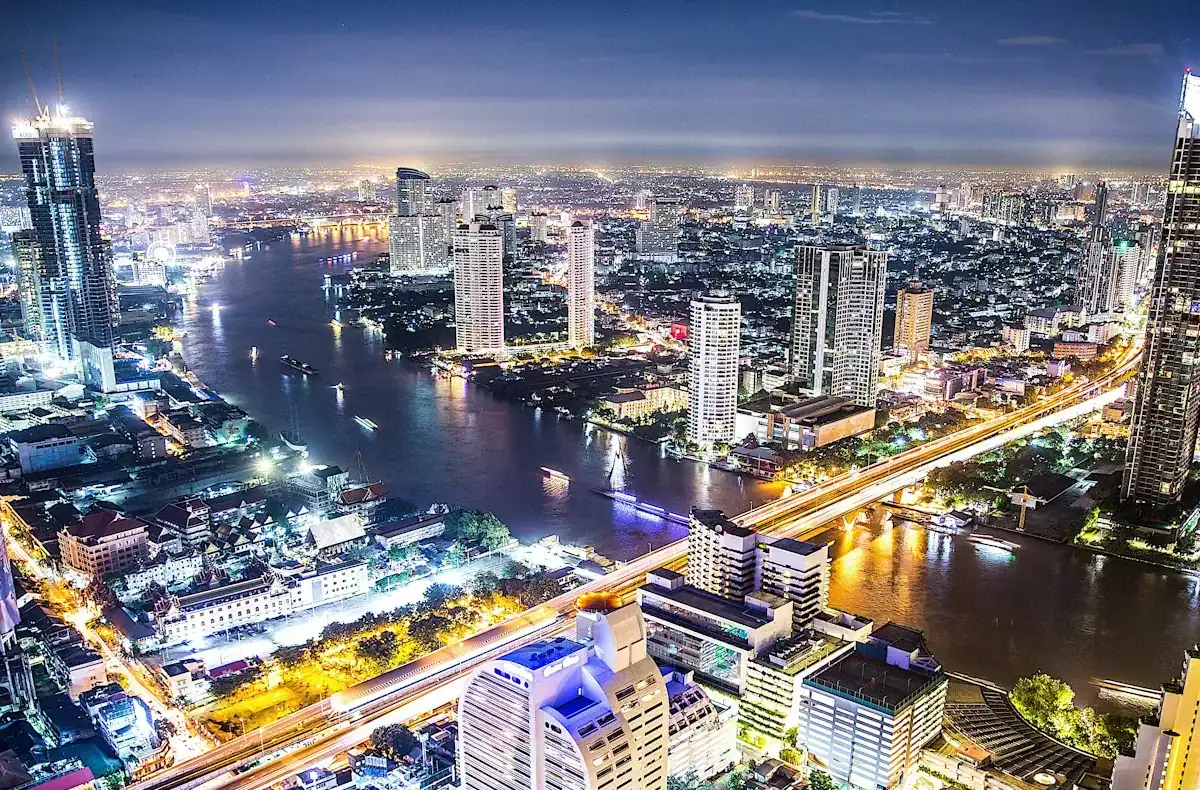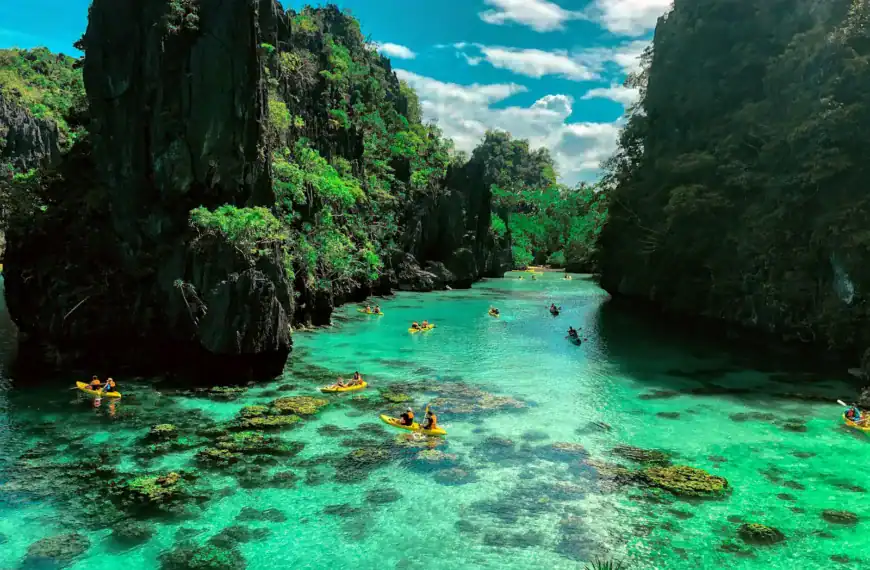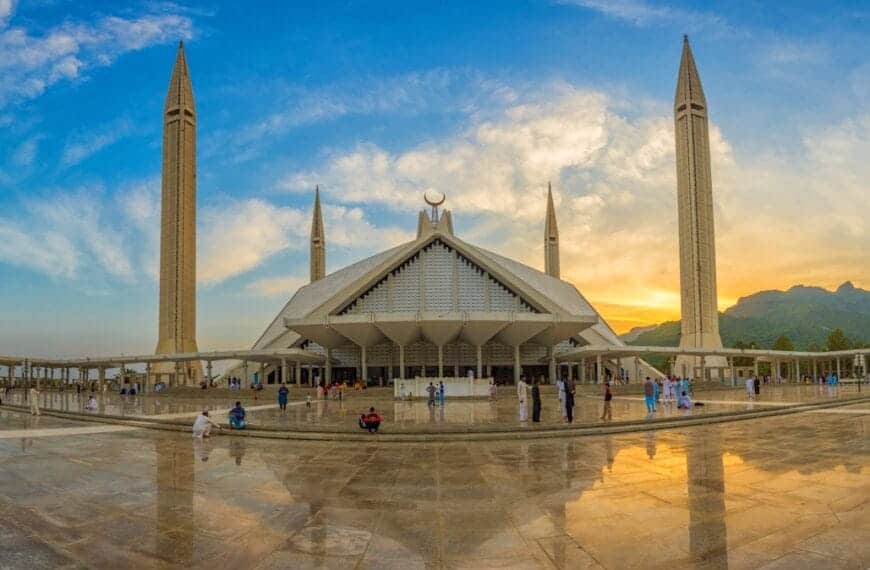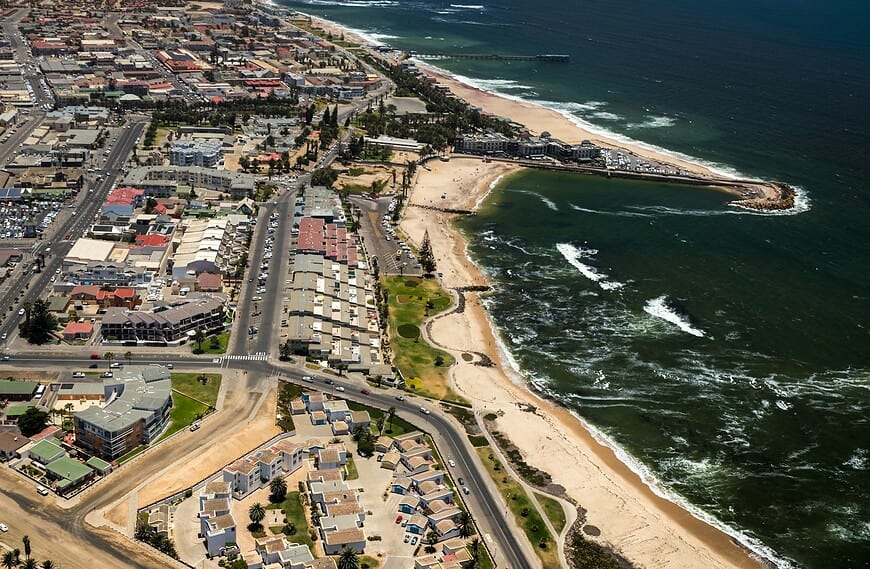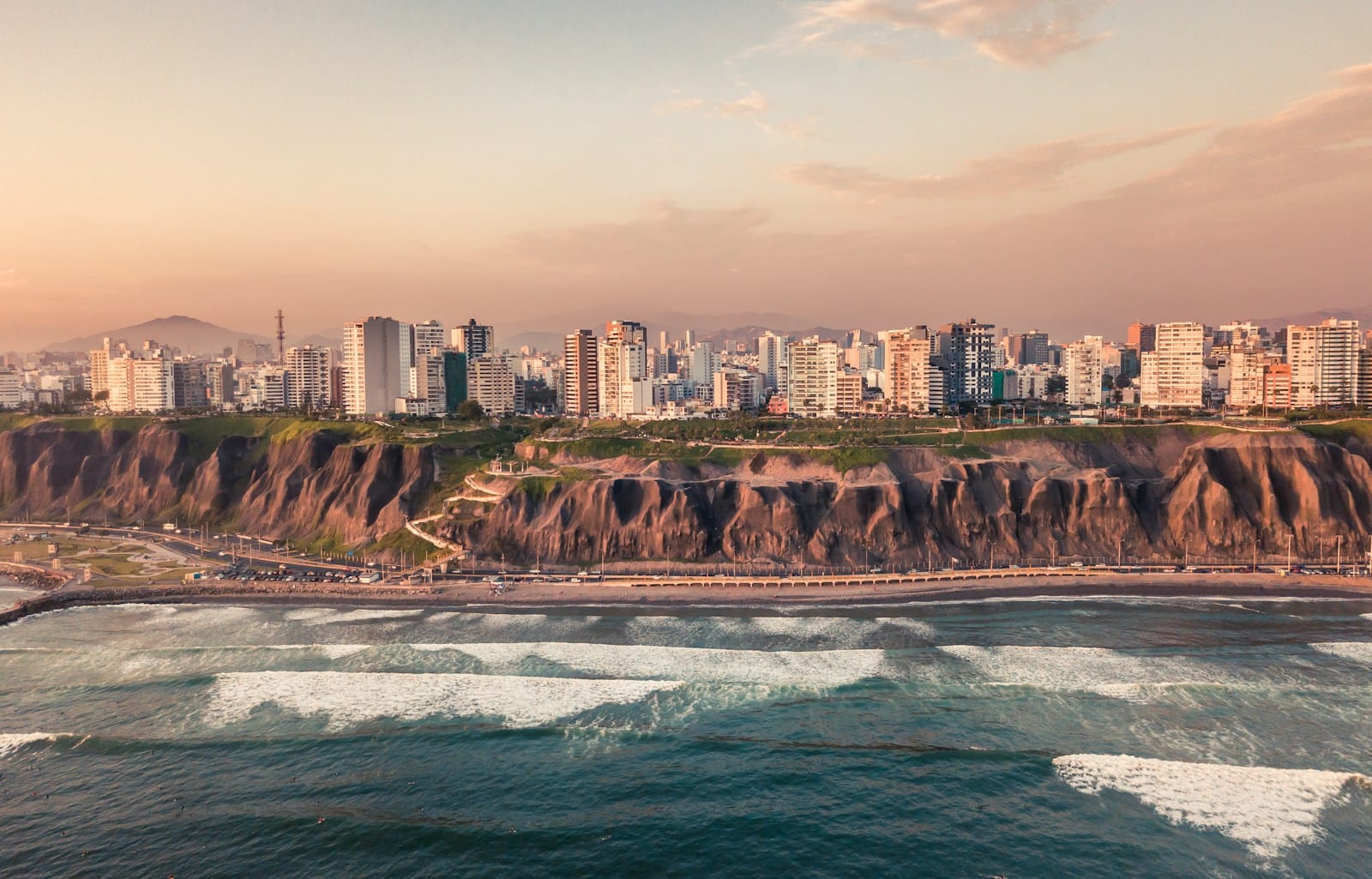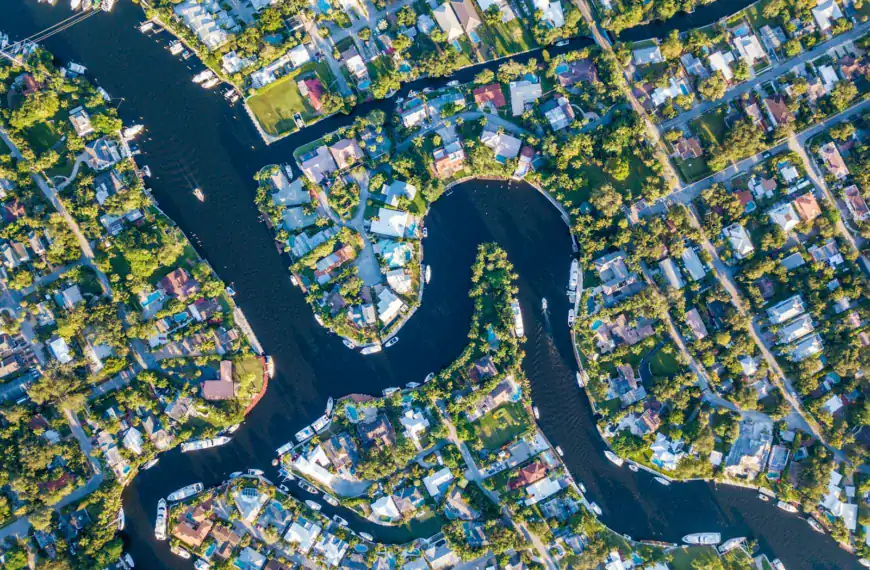Bangkok Travel Guide for Markets, Temples and Food
Intro to Bangkok Travel Guide
Bangkok is a city of contrasts that somehow makes perfect sense: gilded temple spires reflecting in glassy skyscrapers, sunrise monks collecting alms as night markets finally exhale, longtail boats slicing quiet canals while express trains hum overhead. In a single day you can wander the Grand Palace, slurp boat noodles on a plastic stool, cross the Chao Phraya to a riverside shrine, and cap the night thirty stories up beneath a sky of neon. Use this Bangkok travel guide to pair blockbuster sights with small, human moments—because the magic of Thailand’s capital lies in both.
Top Landmarks & Attractions in Bangkok
Chatuchak Weekend Market | Grand Palace | Jim Thompson House | Khao San Road | Lumpini Park | MBK Center | Temple of the Emerald Buddha (Wat Phra Kaew) | Temple of the Reclining Buddha (Wat Pho) | Temple of the Dawn (Wat Arun) | Yaowarat
💡Quick Facts:
Destination: Bangkok
Continent: Asia
Country: Thailand
State/Province: Bangkok Metropolitan Region (special administrative area)
City: Bangkok (Krung Thep Maha Nakhon)
Area: 1,569 km² (605 mi²)
Population: ~11 million (metro ~15 million)
Density: ~7,000 people per km²
Founded: 1782 (became the capital under King Rama I)
Capital Status: National capital of Thailand
Regions/Subregions: Rattanakosin (Old City), Sukhumvit, Silom, Sathorn, Riverside, Chatuchak, Thonburi
Official & Regional Languages: Thai (official); English widely spoken in business/tourism
Currency: Thai Baht (THB, ฿)
Time Zone(s): Indochina Time (UTC+7, no daylight saving)
Airports: Suvarnabhumi Airport (BKK), Don Mueang International Airport (DMK)
Climate: Tropical savanna – hot year-round; dry season Nov–Apr, rainy season May–Oct
Known For: Grand Palace, Wat Pho, Chao Phraya River, floating markets, street food, nightlife
🛂Arrival Info:
Visa Policy: Visa-free or visa-on-arrival for 60+ countries (U.S., EU, UK, Australia)
Visa Required: Some nationalities must apply in advance
Visa on Arrival: 15–30 days depending on nationality
Max Tourist Stay: 30–60 days (extensions available)
Onward Travel: Proof of return/onward ticket may be requested
Immigration Authority: Thai Immigration Bureau
🏥Health Info:
Vaccines Required: None for entry
Vaccines Recommended: Routine immunizations, Hepatitis A, Typhoid, Japanese Encephalitis (for rural travel)
Health Risks: Dengue fever during rainy season; air pollution episodes; food/water safety issues
Hospitals: Bumrungrad International Hospital, Bangkok Hospital, Siriraj Hospital (English-speaking services)
Insurance: Highly recommended; quality care is costly for tourists
Emergency Number: 1669 (ambulance), 191 (police)
🚑 Check travel insurance options for travel emergencies, delays, and medical needs abroad — Get coverage here
💉 Stay Informed with Official Updates: WHO – International Travel & Health | CDC – Travel health updates
🚨Travel Advisory:
Safety Level: Generally safe; standard big-city precautions apply
Petty Crime: Scams (tuk-tuk, gem, “closed temple”), pickpocketing in markets/transport
Natural Risks: Flooding during monsoon; extreme heat in April
🌍Track Real-Time Official Updates: US Travel Advisory | UK Foreign Travel Advice | Government of Canada | NZ SafeTravel
🥳Holidays:
New Year’s Day: Jan 1
Songkran Festival (Thai New Year): Apr 13–15
King’s Birthday: Jul 28
Queen Mother’s Birthday: Aug 12
Chulalongkorn Day: Oct 23
Constitution Day: Dec 10
New Year’s Eve: Dec 31
(Local: Bangkok Songkran Festival Apr, Royal Ploughing Ceremony May, Vegetarian Festival Oct)
💰Visitor Info:
Currency: Thai Baht (THB, ฿)
Cards & ATMs: Widely accepted in malls/hotels; cash preferred in markets and tuk-tuks
Tipping: Not obligatory; rounding up appreciated; 10% in upscale restaurants
Tourist Taxes: Hotel tax applies; airport departure fees included in airfare
Average Budget: $40–80/day (budget), $100–200/day (mid-range), $250+ (luxury)
🛫Airports:
Suvarnabhumi (BKK): Main international hub, 25 km east of city center
Don Mueang (DMK): Secondary airport, hub for low-cost carriers (AirAsia, Nok Air, Lion Air)
Connections: Direct flights to most Asian capitals, Middle East, Europe, Australia
🧳 Delayed or canceled flight? Check if you’re eligible for compensation
🚍Transport:
Local Transit: BTS Skytrain, MRT Subway, Airport Rail Link, buses, taxis, tuk-tuks, motorbike taxis, Grab (ride-hailing)
Water Transport: Express boats on Chao Phraya River, canal (khlong) ferries
Intercity: Trains from Hua Lamphong station (soon Bang Sue Grand Station), long-distance buses, domestic flights
Driving Laws: Left-hand traffic; heavy congestion; IDP recommended
🚗 Book reliable airport transfers and in-city rides in advance. Reserve your ride here
🛰️Connectivity:
Mobile Networks: AIS, TrueMove H, DTAC
Coverage: Excellent citywide
eSIM Options: Available at BKK/DMK airports, 7-Eleven stores, and global providers (Airalo, Holafly)
Public Wi-Fi: Hotels, cafes, malls; some free hotspots at transport hubs
🛜 Stay connected abroad with affordable eSIM data packs. Get your eSIM here
📜Laws & Etiquette:
Drinking Age: 20
Smoking Laws: Restricted in public spaces; vaping banned and subject to fines
Dress Code: Casual; modest attire at temples (cover shoulders/knees)
Etiquette: Greet with “wai” gesture; respect Buddha images and monarchy; remove shoes before entering temples
LGBTQ+ Safety: Welcoming; Bangkok is one of Asia’s most LGBTQ+ friendly cities
👮Emergency Info:
Emergency Number: 191 (police), 1669 (ambulance)
Tourist Police: 1155 (English-speaking assistance)
Tourist Info: Tourism Authority of Thailand
🗺️US/UK Embassies Abroad: US Embassies | UK Embassies
🏛️ Embassy locator tools: Embassies Worldwide
🌞Weather:
Cool/Dry Season (Nov–Feb): 22–32°C (72–90°F), most comfortable for sightseeing
Hot Season (Mar–May): 28–38°C (82–100°F), humid, peak heat in April
Rainy Season (May–Oct): Heavy showers, high humidity, risk of flooding; 25–32°C (77–90°F)
Best Time to Visit: Nov–Feb for cooler temperatures and festivals
🌦️ Stay prepared—check the weather forecast for your destination — Weather Forecast
Must-Visit Districts and Neighborhoods in Bangkok
Rattanakosin (Old City)
Home to the Grand Palace, Wat Phra Kaew (Emerald Buddha), and Wat Pho, Rattanakosin is Bangkok’s ceremonial heart. Mornings are best for cooler temps and softer light; evenings bring temple silhouettes and river breezes.
Thonburi & Khlong San (West Bank)
Across the river from the Old City, Thonburi is crisscrossed by quiet canals and wooden houses. Highlights include Wat Arun’s porcelain spires, Wang Lang Market’s street eats, and creative warehouses in the Khlong San area.
Chinatown (Yaowarat & Talat Noi)
A blaze of gold shop signs and sizzling woks, Yaowarat serves shark-fin-free Chinese-Thai staples, seafood, and desserts till late. Nearby Talat Noi is a warren of artful graffiti, shrines, and photogenic machine-parts shophouses.
Bang Rak & Charoen Krung (Creative District)
Bangkok’s first paved road birthed a riverside neighborhood of galleries, coffee bars, Sino-colonial facades, and the storied General Post Office. Street-art alleys and small design studios make easy wandering.
Sathorn & Silom
Financial by day, food-obsessed by night: Silom’s lane markets, Burmese and Isaan eateries, and late-night dessert bars live beside Sathorn’s rooftop lounges, embassies, and leafy sois.
Siam & Ratchaprasong
Bangkok’s retail engine—Siam Paragon, CentralWorld, MBK, and the Bangkok Art & Culture Centre (BACC). Outside, the Erawan Shrine glitters among malls and skywalks.
Sukhumvit (Asoke–Thonglor–Ekkamai)
High-rise modern Bangkok with BTS stations, global dining, speakeasies, and brunch cafés. Thonglor/Ekkamai skew upscale and creative; Asoke connects seamlessly to the MRT.
Ari & Phaya Thai
Leafy, residential, and café-rich, Ari rewards slow travelers with farmers’ markets, indie noodle shops, and mellow sunset bars—not far from the BTS line.
Phra Khanong & On Nut
Local-feeling stretches of Sukhumvit where night markets hum, co-working spaces thrive, and rent goes further. Great base for long stays with fast BTS access.
Riverside (Charoen Nakhon–ICONSIAM)
Riverside hotels, ICONSIAM’s luxe mall and food court, ferry piers, and sunset promenades. It’s an easy launchpad for Wat Arun, Chinatown, and Khlong San’s art spaces.
How to Choose Where to Go (and Stay) in Bangkok
- First-timers: Base in Sukhumvit (Asoke–Nana) or Siam for effortless BTS/MRT links and a wide dining spread. Day-trip to the Old City and Thonburi; return to modern comforts at night.
- Temple & history lovers: Stay near the river (Rattanakosin/Charoen Krung) to walk or ferry to the Grand Palace, Wat Pho, and Wat Arun. Evenings on the riverfront are cooler and calmer.
- Food-centric trips: Chinatown, Bang Rak, Thonglor put you within chopstick distance of street grills, Bib Gourmand stalwarts, and inventive Thai tasting menus.
- Nightlife & rooftops: Silom/Sathorn for high-low bar-hopping and sky-high sundowners; Thonglor for cocktails and chef-driven small plates.
- Families: Riverside resorts for pools and ferries, or Siam for malls, aquariums, kid-friendly restaurants, and covered skywalks.
- Long stays/remote work: Ari, Phra Khanong, On Nut mix local vibe, co-working, markets, and value—still close to BTS.
- Market & craft hunters: Talat Noi, Wang Lang, Chatuchak area for weekend treasure hunts and weekday fabric, flower, and fresh markets.
Natural Escapes and Scenic Spaces
- Lumphini Park: The city’s green lung near Silom: lakeside jogs, monitor lizards sunning on banks, and morning tai chi beneath banyans.
- Benjakitti Forest Park & Skywalk: Elevated paths thread through rewilded wetlands behind Queen Sirikit Center—sunset reflections with skyline views.
- Bang Krachao (Phra Pradaeng): The “Green Lung of Bangkok” is a loop of canals, stilt houses, and gardens. Rent bikes, snack at the Sri Nakhon Khuean Khan Park, and ferry back by dusk.
- Benchasiri Park: Pocket-sized park at Phrom Phong with playgrounds, sculptures, and a breezy evening scene.
- Chao Phraya River: Hop ferries, ride sunset boats, or charter a longtail for canal loops; river breezes offer natural A/C.
Cultural & Historic Landmarks
- Grand Palace & Wat Phra Kaew: Bangkok’s ritual center; dress modestly (shoulders/knees covered). Arrive at opening to wander courtyards before the heat and tour groups.
- Wat Pho: Reclining Buddha’s 46 meters of gold, murals, and famed massage school—book a traditional Thai massage here for an authentic reset.
- Wat Arun (Temple of Dawn): Porcelain-inlaid prangs glow at sunrise and burnished gold at sunset. Climb terraces for river panoramas.
- Wat Saket (Golden Mount): Breezy hilltop chedi with circular stairways and citywide views—especially atmospheric near Loy Krathong.
- Jim Thompson House: Teak pavilions showcasing textiles and the mystery-tinged legacy of the American entrepreneur who helped revive Thai silk.
- Bangkok National Museum & Museum Siam: From royal regalia to playful exhibits on Thai identity; both add cultural context to your temple time.
- Erawan Shrine: A Hindu spirit shrine pulsing with incense and classical dance offerings, tucked among the skywalks of Ratchaprasong.
Local Flavors, Arts, and Everyday Culture
- Street Food Circuits: Yaowarat (Chinatown) for seafood and desserts; Wang Lang for fried chicken, curries, and sweets; Victory Monument for boat noodles.
- Markets: Chatuchak Weekend Market (crafts, clothes, ceramics); Pak Khlong Talat (flower market, best at night), and Or Tor Kor (gleaming produce and regional delicacies).
- Coffee & Dessert: Thai-grown beans shine in Ari and Thonglor cafés; try coconut ice cream, mango sticky rice, and pandan custards.
- Rooftops & Jazz Bars: From riverside terraces to Sathorn’s skyline perches; round out with a night at a live-jazz shophouse.
- Muay Thai: Catch bouts at Rajadamnern or Lumpinee—or try a beginner class for clinch basics and footwork.
- Craft & Design: Charoen Krung studios, Talat Noi printmakers, and silk shops near Jim Thompson for locally made souvenirs.
Must-Do Experiences in Bangkok
- Dawn Temples, Dusk Rooftops: Start at Wat Pho and Wat Arun; end fifteen or thirty floors up with a breeze and river lights.
- Khlong (Canal) Tour: Longtail through Thonburi’s backwaters—stilt houses, orchid pots, and hidden wooden temples—ending at a local market.
- Food Walk in Chinatown: Let a guide thread you through alley grills to oyster omelets, braised duck, and sesame-filled sweets.
- Massage & Wellness: A foot massage between museum and market runs buys back your legs; finish with herbal compress or sauna.
- Flower Market at Midnight: Pak Khlong Talat blooms all night—lotus buds, marigold garlands, and vendors crafting offerings at lantern-lit tables.
- Ayutthaya Day Trip: Ruined prangs and monasteries of the former capital (UNESCO), reachable by train, car, or river boat—history without the Bangkok crowds.
Make the most of your trip with curated Bangkok tours and unforgettable things to do in Bangkok — from temple visits at sunrise and canal cruises to sizzling Chinatown food walks, rooftop views, and excursions to Ayutthaya. We may earn a commission if you book through our links — at no additional cost to you.
How to Get Around Bangkok
- BTS Skytrain (Sukhumvit & Silom Lines): Fast, air-conditioned, and tourist-friendly; stations align with shopping hubs and nightlife areas. Buy stored-value cards or single journeys at machines; avoid rush hour if you can.
- MRT Subway (Blue & Purple Lines): Connects to the Old City (Sanam Chai/Museum Siam), Chinatown (Wat Mangkon), and transport hubs. Trains are frequent, stations well signed, and platforms cool.
- Airport Rail Link: Speedy link between Suvarnabhumi (BKK) and central Bangkok; if you’re Riverside-bound, change to BTS at Phaya Thai.
- Chao Phraya Express Boats & Ferries: Orange-flag boats run the spine of the river; cross-river ferries get you to Wat Arun, Thonburi markets, and creative districts for a few baht.
- Khlong Boats (Canal Ferries): Fast and splashy along Saen Saep; great at rush hour but expect wet steps and basic piers—pack a sense of humor.
- Taxis & Grab: Cheap by global standards; ensure the meter is on or use the app for transparent pricing. Traffic can crawl—combine with BTS/MRT when possible.
- Tuk-tuks: Fun for short hops and photo ops; agree on price first and skip unsolicited “special” shopping stops.
- City Buses: Extensive, ultra-affordable, and adventurous; use Google Maps or local apps to decode routes.
- Trains Beyond Bangkok: Long-distance services now depart primarily from Krung Thep Aphiwat Central Terminal (with some routes still using historic Hua Lamphong). For Ayutthaya/Kanchanaburi, check current departure stations when you plan.
Best Time to Visit Bangkok
- Cool & Dry (November–February): The most comfortable months—low humidity, clear skies, and lively outdoor events. Hotel rates peak, so book early around holidays and Chinese New Year.
- Hot Season (March–May): Temperatures climb; plan early starts, long lunches in A/C, and sunset sightseeing. Songkran (Thai New Year, mid-April) brings joyous citywide water fights and temple merit-making.
- Rainy Season (June–October): Tropical showers range from quick bursts to dramatic downpours; the city gleams afterward. Fewer crowds, greener parks, and moody river light reward flexible travelers.
- Shoulder Sweet Spots: Late October and early March often deliver manageable heat and thinner crowds—great for food crawls and market days.
Sample Itineraries for Bangkok
3-Day Itinerary
- Day 1: Old City loop—Grand Palace and Wat Phra Kaew at opening, walk to Wat Pho for the Reclining Buddha and a massage at the traditional school. Ferry across to Wat Arun for sunset. Dinner at a riverside terrace; optional nightcap on a nearby rooftop.
- Day 2: Chinatown deep dive—Talat Noi murals and shrines, Yaowarat street-food lunch, and a guided food walk after dark. End with a sweet soup or mango sticky rice; tuk-tuk back along emptying avenues.
- Day 3: Morning in Benjakitti Forest Park and the Skywalk, then the Jim Thompson House for textiles and teak architecture. Shop or gallery-hop in Siam/BACC; sunset cocktails in Sathorn and a jazz bar finish.
5-Day Itinerary
- Day 1: Follow Day 1 above; add a late ferry to Pak Khlong Talat (flower market) for lantern-lit browsing.
- Day 2: Chinatown by day and night as above, with coffee breaks in Talat Noi and a hidden-shrine detour.
- Day 3: Ayutthaya day trip—temple ruins by bike or tuk-tuk, riverside lunch, return by evening boat or train.
- Day 4: Thonburi khlong tour (longtail + canal temples) and Wang Lang Market graze; cross to ICONSIAM for river views and regional food stalls.
- Day 5: Lumphini tai chi dawn, then Ari cafés and markets. Afternoon spa/massage; finish with a tasting-menu Thai dinner or rooftop sundowner.
7-Day Itinerary
- Day 1: Old City trio (Grand Palace, Wat Pho, Wat Arun) with long breaks for shade and snacks.
- Day 2: Museums & identity—Museum Siam and National Museum; evening canal ferry to a riverside diner.
- Day 3: Chinatown + Bang Rak Creative District walk; galleries, coffee, and shophouse desserts; night food tour.
- Day 4: Ayutthaya or Kanchanaburi (Bridge on the River Kwai + WWII sites) day trip; back by train or private car.
- Day 5: Bang Krachao bike loop—boardwalks, park lakes, and market snacks; sunset at Benjakitti Skywalk.
- Day 6: Shopping with purpose—Thai crafts at Chatuchak (weekend) or art/design markets; rooftop or river cruise night.
- Day 7: Free day for a cooking class, Muay Thai lesson, or spa; evening jazz bar in a heritage shophouse.
10-Day Itinerary
- Day 1: Settle near BTS; evening river ferry and casual dinner by the water.
- Day 2: Grand Palace/Wats, museum add-on if energy allows, sunset at Wat Arun.
- Day 3: Chinatown and Talat Noi photography morning; rest; guided street-food crawl at night.
- Day 4: Ayutthaya ruins by bike; return for massage and a quiet riverside supper.
- Day 5: Thonburi khlong tour + Wang Lang Market; ICONSIAM galleries and fountain show after dark.
- Day 6: Bang Krachao biking and cafés; late-day rooftop with golden-hour river light.
- Day 7: Kanchanaburi day trip (railway, museum, Erawan waterfalls) or Samut Songkhram’s Amphawa floating market (weekend).
- Day 8: Design & craft day—Charoen Krung studios, silk shopping, BACC exhibits; drinks in Sathorn’s speakeasies.
- Day 9: Cooking class + spa afternoon; night boat along the Chao Phraya for lit-up temple views.
- Day 10: Last-minute markets (Or Tor Kor/Chatuchak); temple farewell or coffee crawl; airport rail with time to spare.
Safety & Etiquette in Bangkok
- Heat & Hydration: Bangkok is tropical—carry water, rest mid-afternoon, and use sunscreen. Light clothing is fine; bring a shawl for temples.
- Temple Dress & Conduct: Cover shoulders and knees; remove shoes; keep voices low; never point feet at Buddha images or sit higher than monks.
- Street Smarts: Petty theft is uncommon but possible—zip bags in crowds and be wary of too-good-to-be-true gem/tailor schemes. Only hop in taxis that use the meter or confirm price via app.
- Scams & Animals: Decline animal photo ops; avoid venues with wildlife exploitation. Respect licensed tour operators with visible safety gear.
- Tipping & Payments: Rounding up is appreciated; 10% for table service at nicer spots. Cards are widely accepted; carry cash for markets and boats.
Final Planning Checklist for Bangkok
- Documents & Connectivity: Passport validity (6+ months), travel insurance, and an eSIM/local SIM for cheap data and ride-hailing. Screenshot booking QR codes.
- Packing: Breathable layers, modest temple cover-ups, compact umbrella, good walking shoes, and a lightweight tote for markets.
- Money & Transport: ATMs are common; keep small notes/coins for boats and buses. Learn the BTS/MRT interchange points and ferry piers early.
- Health & Comfort: Routine meds, rehydration salts, and hand gel. If you’re sensitive to spice, order “phet nit noi” (a little spicy).
- Bookings: Reserve palace tickets, food tours, day trips, and rooftop bars at peak times (Nov–Feb, holidays).
Plan Smarter, Travel Better
- Time-Block by Geography: Group Old City + river in one cluster; Chinatown + Bang Rak in another; Sukhumvit + Sathorn/Silom as a third. You’ll trade taxis for ferries and breeze through more.
- Beat the Heat: Start at opening hours, retreat to museums/cafés midday, then re-emerge for golden-hour ferries and rooftops.
- Eat Where the Line Is: High turnover means fresh oil, crisp fry, and vibrant spice. Ask vendors for their one or two best dishes; they’ll smile and serve confidently.
- Go Small-Group: Food walks, khlong tours, and Ayutthaya day trips feel richer with fewer guests and engaged guides—worth the modest premium.
- Build Flex Days: Bangkok rewards curiosity—leave room to follow the sound of a street band, a lane of paper lanterns, or the scent of pandan waffles.
Where to Travel After Bangkok
- Ayutthaya: An hour north, the former Siamese capital’s brick prangs, tree-wrapped Buddhas, and river loop create a gentle, history-rich day or overnighter. Pair temple touring with a sunset boat ride.
- Chiang Mai: A short flight delivers mountains, craft villages, and a calmer old city moated by brick walls. Cooking classes, elephant-friendly sanctuaries, and night bazaars set an unhurried rhythm.
- Phuket: Swap river ferries for island boats—beaches, Old Town shophouses, and day trips to Phang Nga and Similan. Ideal for beach-plus-culture combos.
- Krabi: Railay’s karsts, Hong’s jade lagoons, and mangrove kayaking add wild drama to a Bangkok–south loop. Quieter bases (Klong Muang/Tubkaek) keep evenings mellow.
- Kanchanaburi: WWII history at the River Kwai, scenic train rides, and Erawan’s tiered falls. Stay riverside for cicadas at dusk and mist at dawn.
- Sukhothai: Another UNESCO-listed former capital—bicycling among lotus ponds and graceful chedis offers a contemplative contrast to Bangkok’s buzz.
It’s Time to Experience Bangkok
Bangkok isn’t just a checklist of temples and markets; it’s a rhythm—boats threading canals, incense drifting from shrines, woks snapping to life at dusk. Let mornings belong to river breezes and gilded halls, afternoons to cool galleries and coffee, and evenings to rooftops and alleys where supper is cooked to order.
Use this Bangkok travel guide to stitch its districts together—and write a version of the city that feels like yours.

